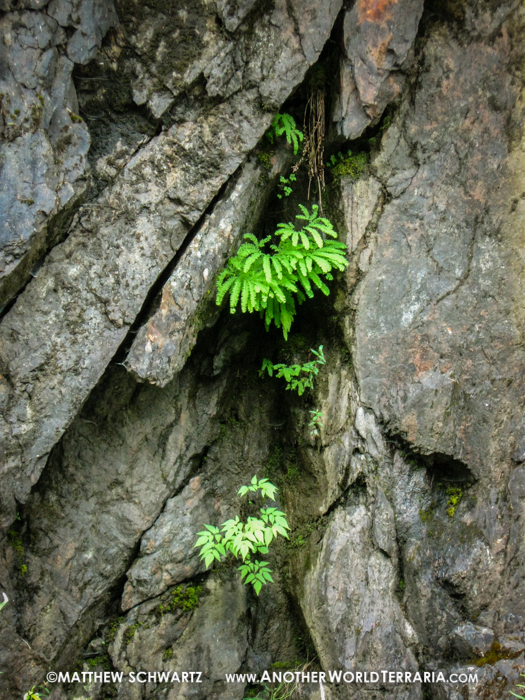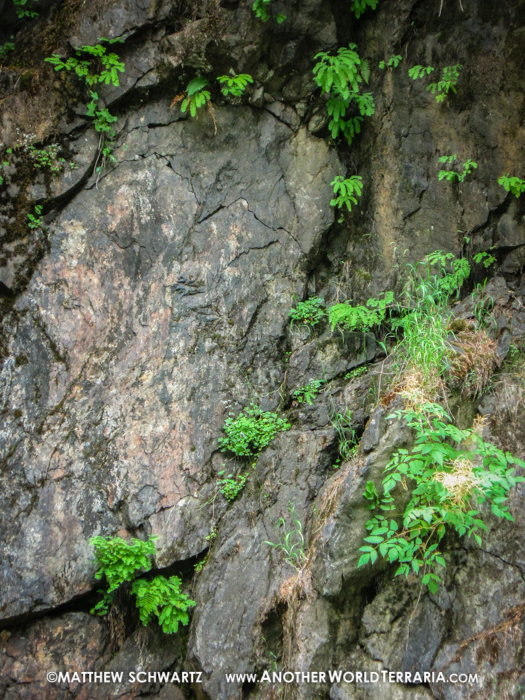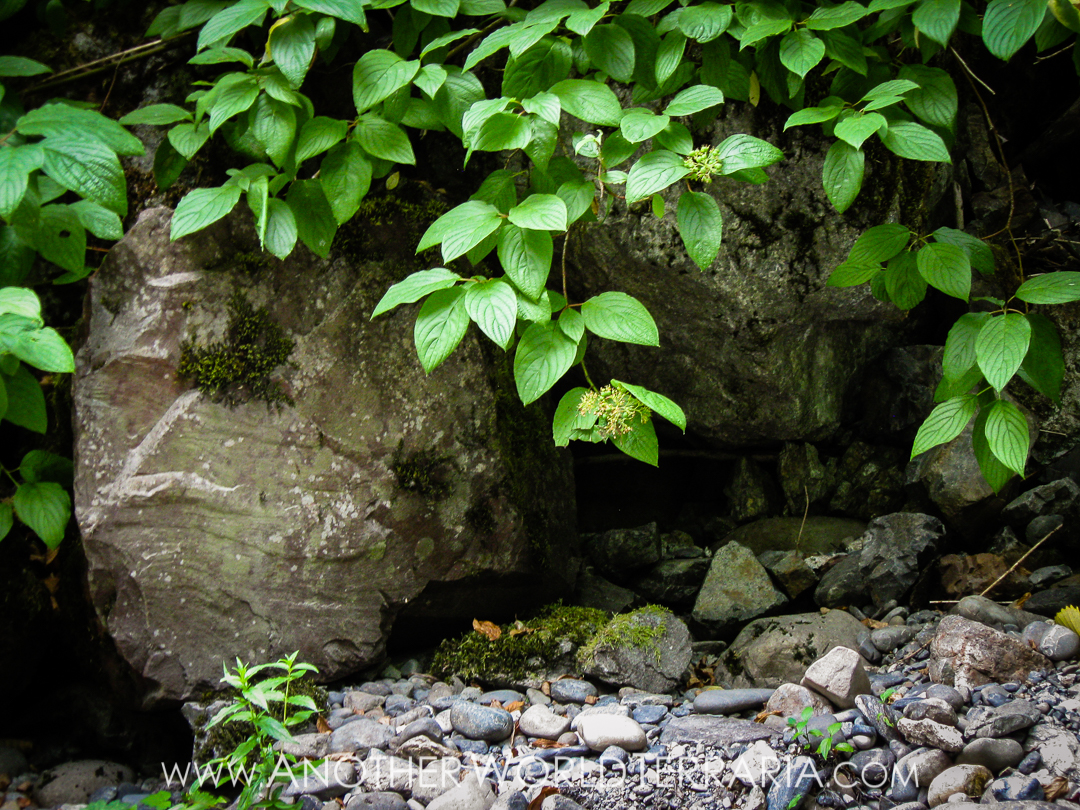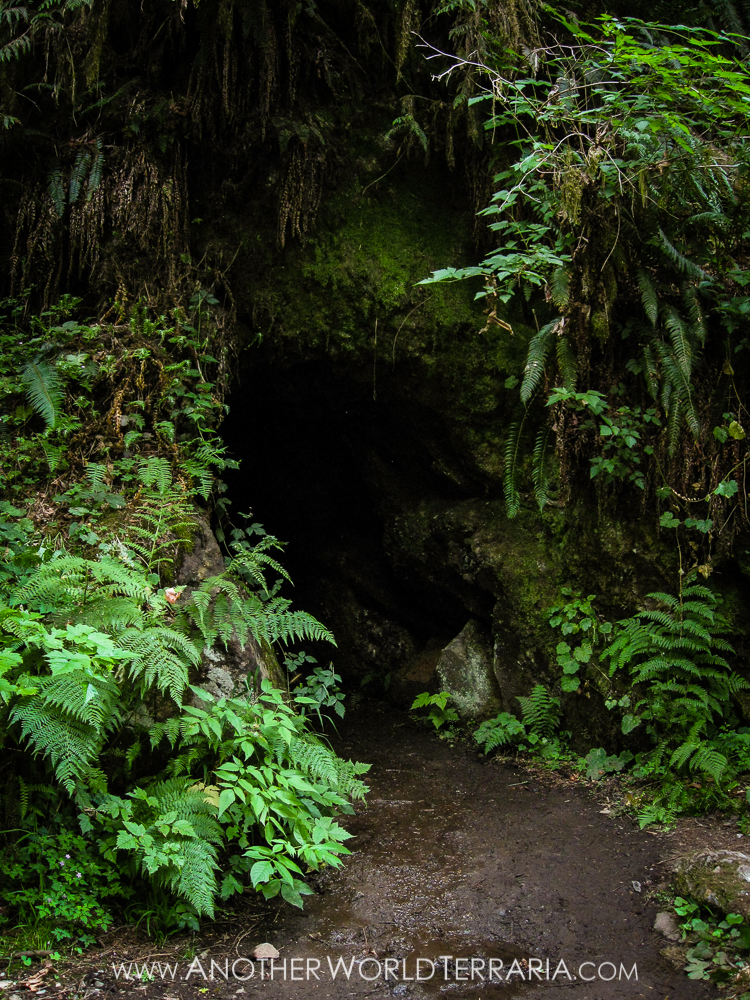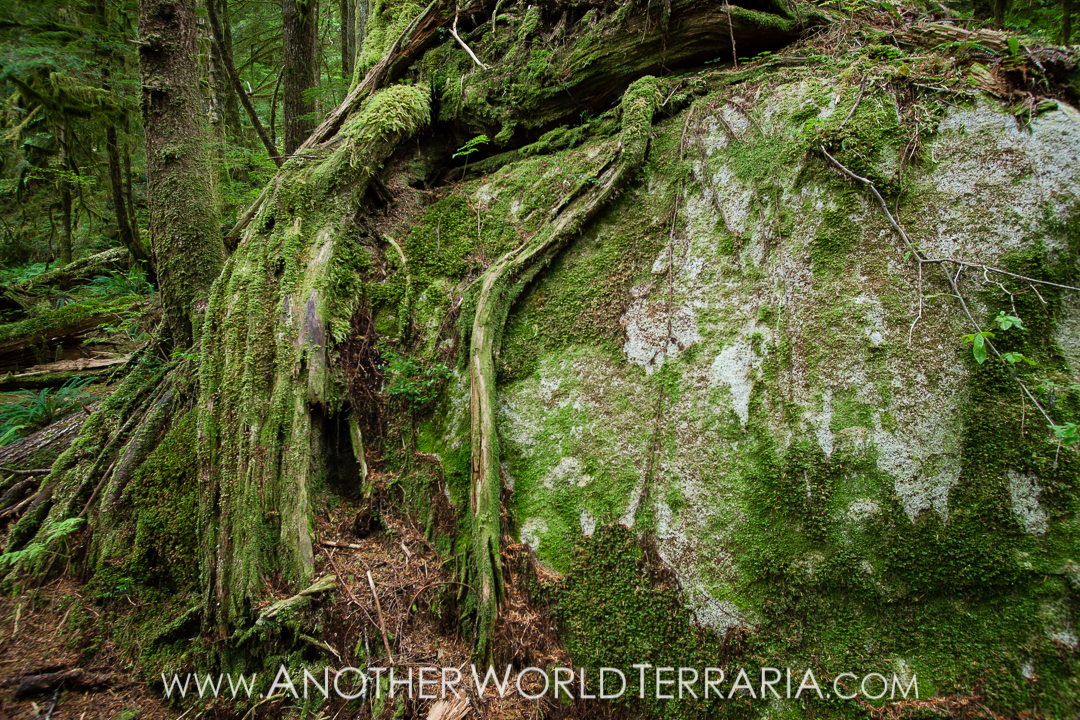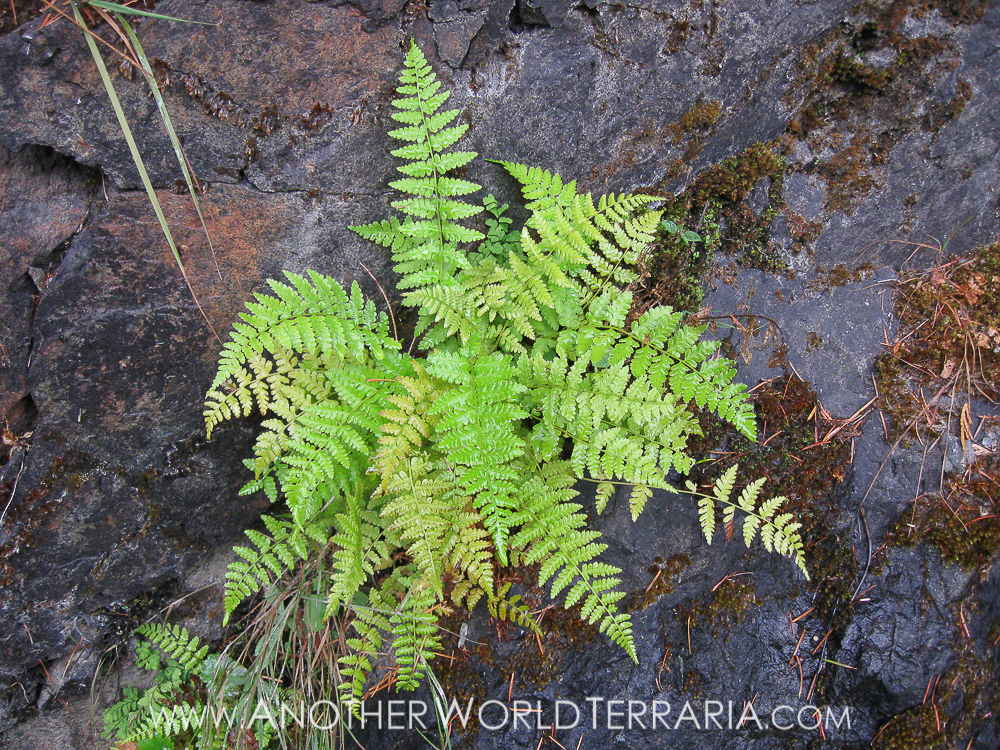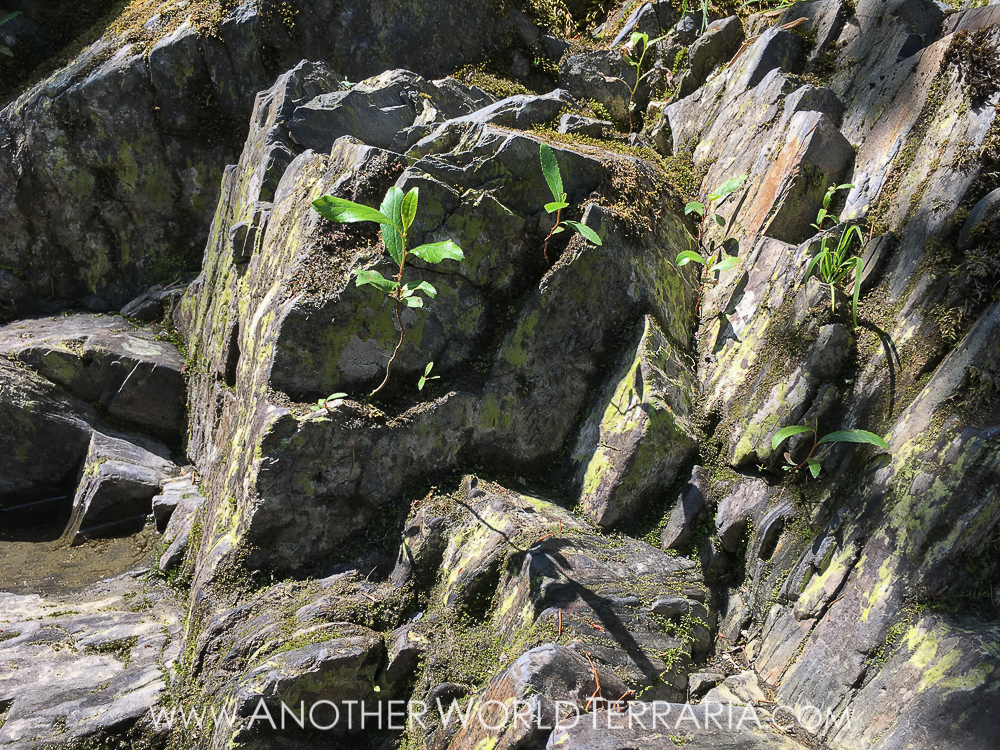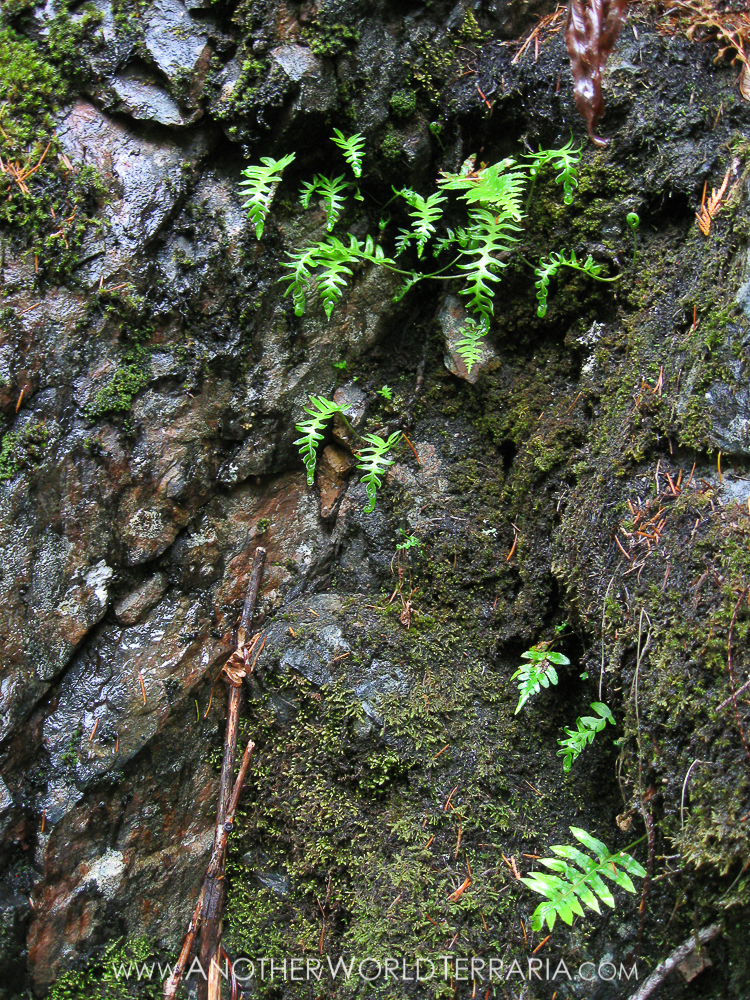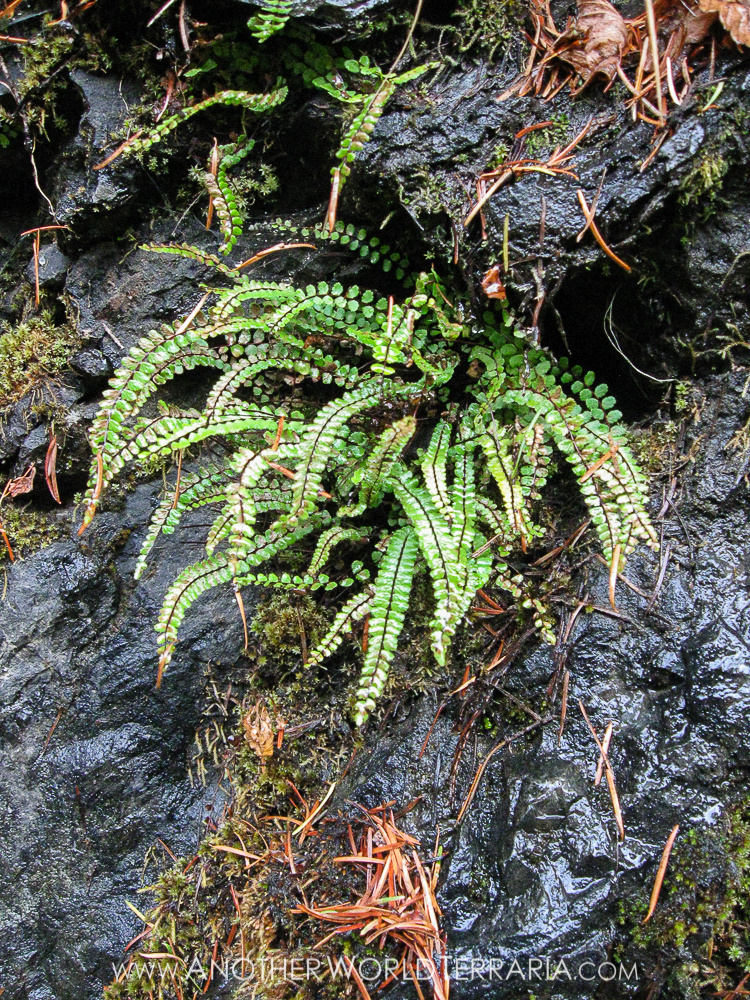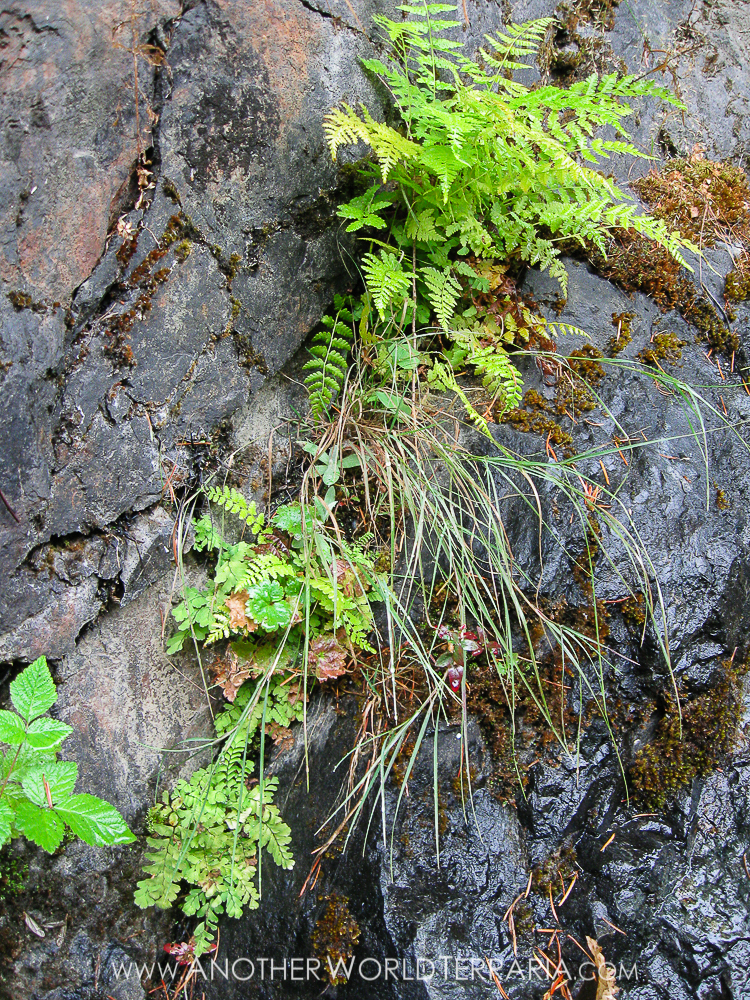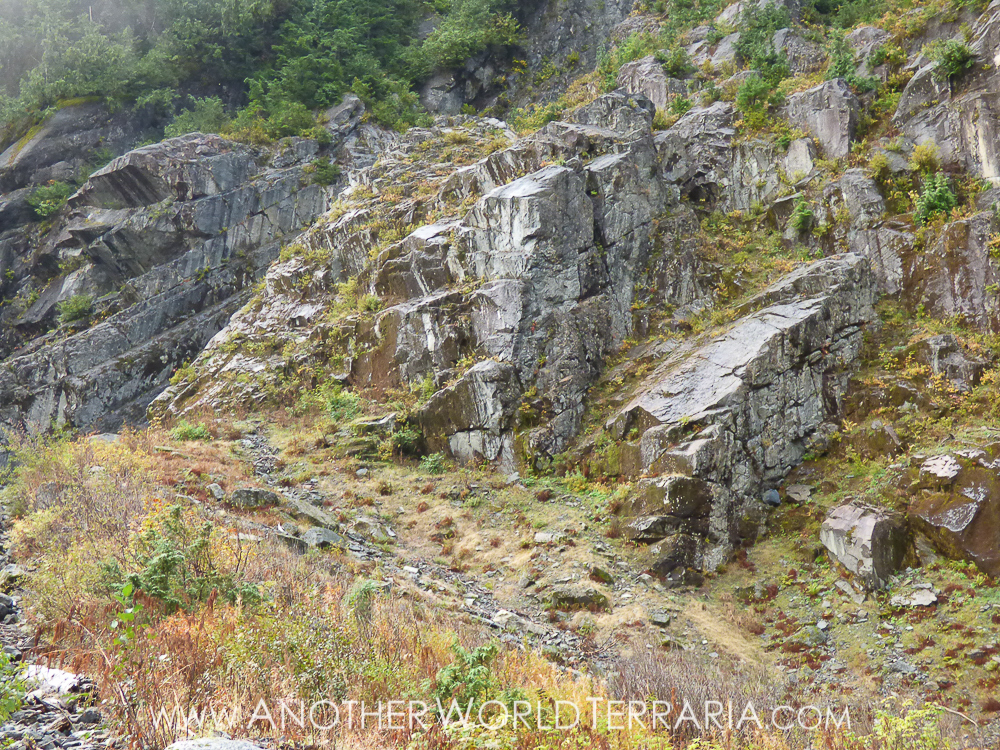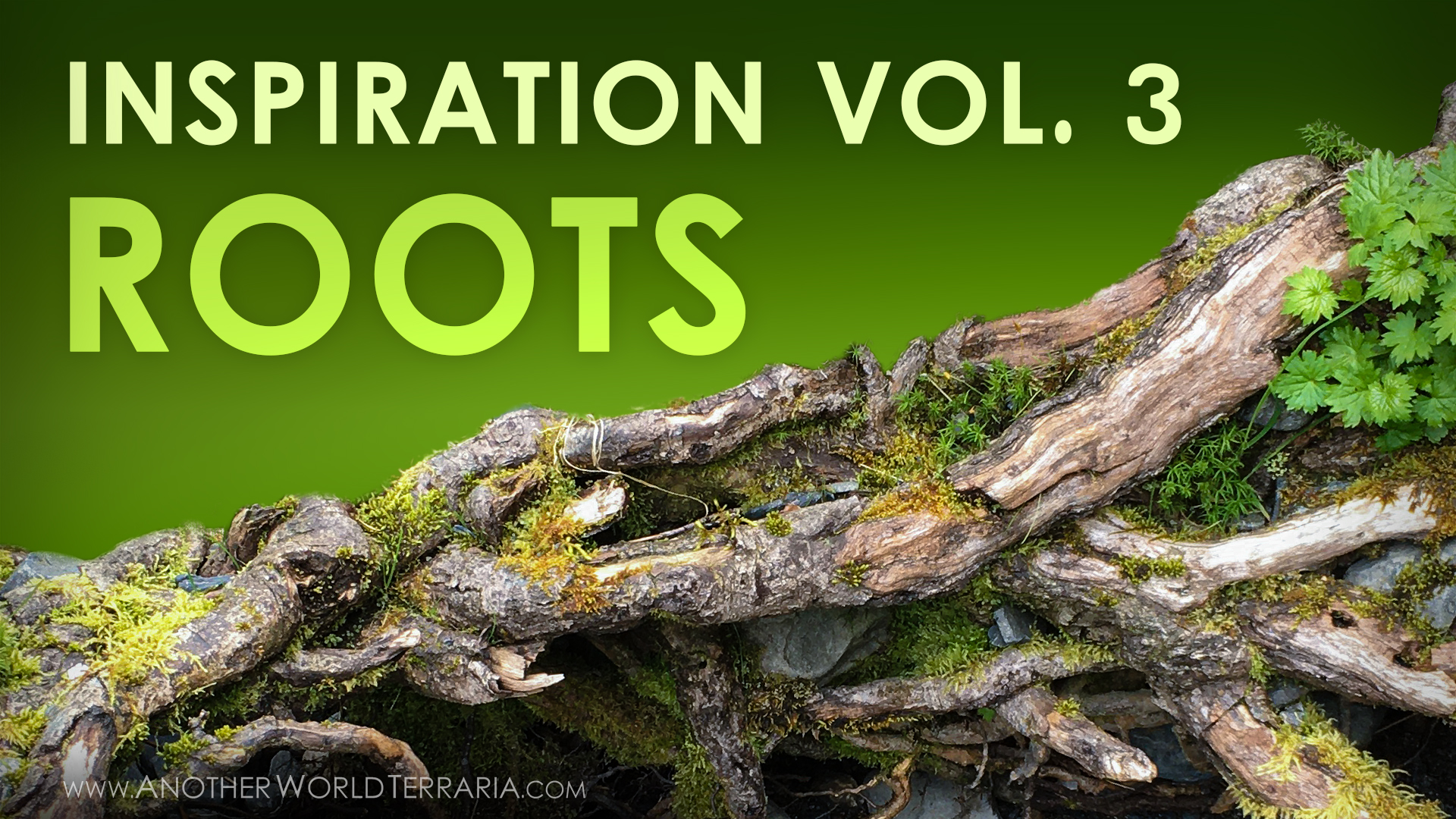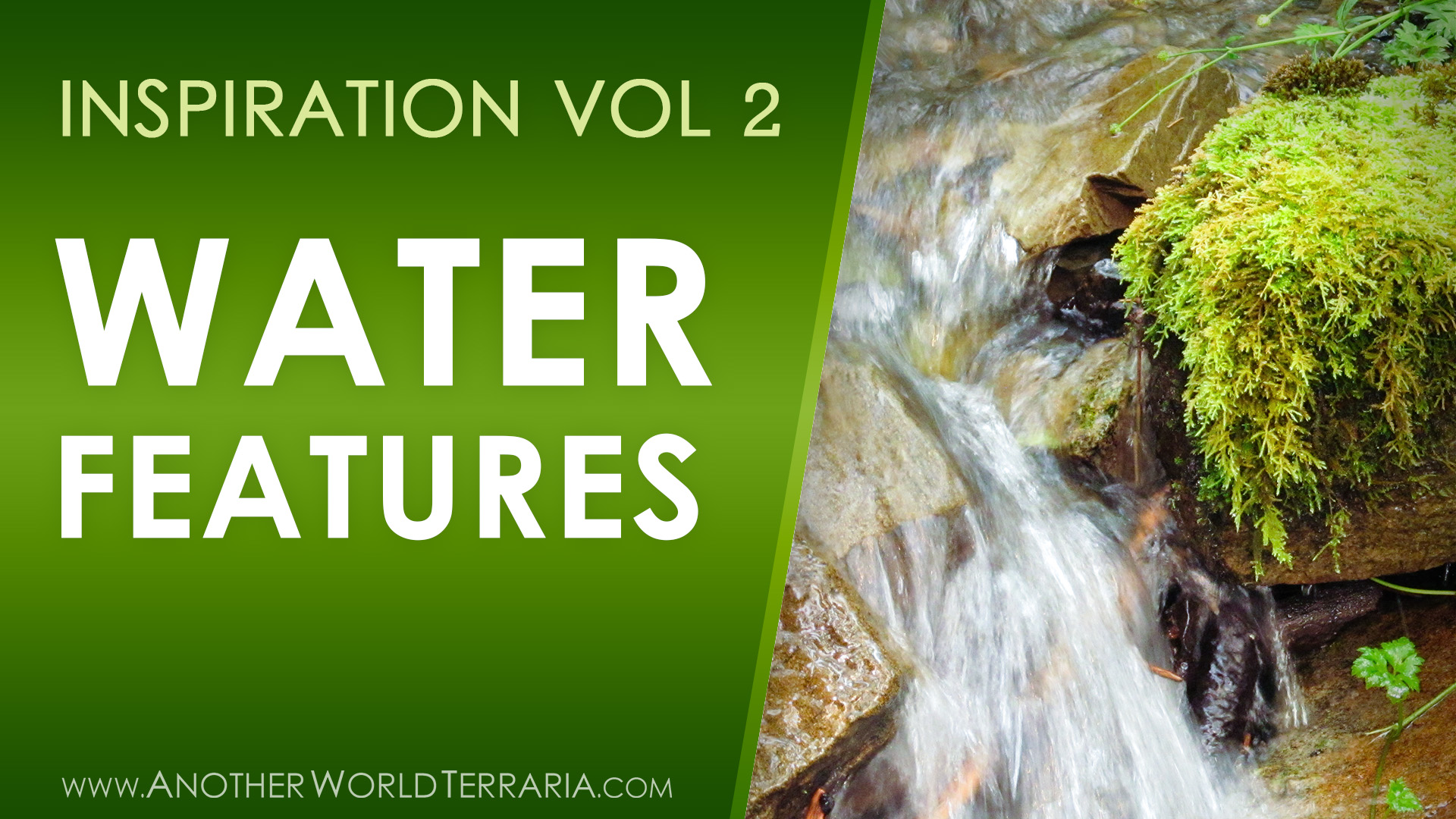Rock Walls and Crevices as Terrarium Inspiration
This collection of photos should give you ideas and reference points for rock hardscapes in terrariums, such as backgrounds or primary layout features.
There are some tips at the end of the post which will help you create more artistic and interesting designs.
Key Elements in This Collection
- Rock cliff faces
- Rock crevices and cracks
- Overhangs and depth
- Lithophytic ferns and other plants
- Textures and patterns
- Visual flow and composition
Tips for Terrarium Rock Hardscapes
When creating rock hardscapes in terrariums, pay particular attention to the following:
Overall composition and visual flow
Try to think of the entire design as a whole.
It’s fine to focus on details and specific areas, but remember to frequently step back and see how the entire thing looks.
Creating interest and depth.
Try making overhangs, crevices, cracks, and other unique features to:
- draw the viewer in to the composition
- introduce dramatic elements and lighting shifts
- create planting areas
Realistic textures, patterns, and colors
There’s nothing wrong with being creative, but if your goal is to make a natural-looking design, then pay attention to how things look in nature.
You can emulate nature to some extent, while still making the design your own.
Size Variance
Vary the size of the rocks and sections of rocks. Use some large ones, some medium, and some small, to:
- create a more natural appearance
- improve visual flow
- keep the viewer’s interest
- provide texture contrast
Pro tip: If the type of rock you are using is relatively soft, you can carefully crush some of it with a hammer to get some tiny pieces and grains (See safety advice at the end of this article.) Then disperse that in between the main rocks and around the base to create a next-level naturalistic design.
Natural strata
In general, try to keep consistent angles across all layers and grains in the rocks, to:
- Improve the visual flow of the composition
- Make the hardscape look natural
Forethought about plant and moss placement
As you’re planning the entire hardscape, try to envision the plantings that you’ll make.
With regard to the plants, think about things such as:
- Type of plants and their cultural requirements
- Size of the plants
- Growth habit
- Texture and color
Important Safety Information
Always wear the proper safety equipment when crushing, breaking, cutting, and carving rocks.
Some recommended equipment:
- full-face shield
- dust mask
- thick work gloves
- long sleeves and pants
Also use the proper tools, work in an appropriate location, and be extremely careful.

